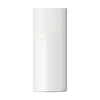What's inside
What's inside
 Key Ingredients
Key Ingredients

 Benefits
Benefits

 Concerns
Concerns

 Ingredients Side-by-side
Ingredients Side-by-side

Water
Skin ConditioningAlcohol
AntimicrobialEthylhexyl Methoxycinnamate
UV AbsorberDipropylene Glycol
HumectantGlycerin
HumectantButyl Methoxydibenzoylmethane
UV AbsorberAcrylates/C10-30 Alkyl Acrylate Crosspolymer
Emulsion StabilisingTriethanolamine
BufferingEthylhexyl Triazone
UV AbsorberBis-Ethylhexyloxyphenol Methoxyphenyl Triazine
Skin ConditioningDisodium EDTA
Xanthan Gum
EmulsifyingBHT
AntioxidantArginine
MaskingSodium Hyaluronate
HumectantHydrolyzed Collagen
EmollientSodium Acetylated Hyaluronate
HumectantButylene Glycol
HumectantPhenoxyethanol
PreservativeWater, Alcohol, Ethylhexyl Methoxycinnamate, Dipropylene Glycol, Glycerin, Butyl Methoxydibenzoylmethane, Acrylates/C10-30 Alkyl Acrylate Crosspolymer, Triethanolamine, Ethylhexyl Triazone, Bis-Ethylhexyloxyphenol Methoxyphenyl Triazine, Disodium EDTA, Xanthan Gum, BHT, Arginine, Sodium Hyaluronate, Hydrolyzed Collagen, Sodium Acetylated Hyaluronate, Butylene Glycol, Phenoxyethanol
Cetyl Ethylhexanoate
EmollientZinc Oxide
Cosmetic ColorantCyclomethicone
EmollientDimethicone
EmollientTitanium Dioxide
Cosmetic ColorantHydrogenated Polydecene
EmollientTripropylene Glycol
AntioxidantWater
Skin ConditioningHdi/PPG/Polycaprolactone Crosspolymer
PEG-9 Polydimethylsiloxyethyl Dimethicone
EmulsifyingDipropylene Glycol
HumectantPotassium Hydroxide
BufferingGlycerin
HumectantCetyl Dimethicone
EmollientEctoin
Skin ConditioningGlycogen
HumectantAlpinia Uraiensis Leaf Extract
Skin ConditioningOryza Sativa Bran Extract
Skin ConditioningPaeonia Officinalis Flower Extract
TonicTocopherol
AntioxidantCoix Lacryma-Jobi Ma-Yuen Seed Extract
Skin ConditioningMorinda Citrifolia Fruit Juice
Skin ConditioningButylene Glycol
HumectantAcrylates/Ethylhexyl Acrylate/Dimethicone Methacrylate Copolymer
Skin ConditioningSilica
AbrasiveSqualane
EmollientSorbitan Sesquiisostearate
EmulsifyingTriethoxycaprylylsilane
Hydrogen Dimethicone
Sodium Metaphosphate
BufferingPhenoxyethanol
PreservativeCetyl Ethylhexanoate, Zinc Oxide, Cyclomethicone, Dimethicone, Titanium Dioxide, Hydrogenated Polydecene, Tripropylene Glycol, Water, Hdi/PPG/Polycaprolactone Crosspolymer, PEG-9 Polydimethylsiloxyethyl Dimethicone, Dipropylene Glycol, Potassium Hydroxide, Glycerin, Cetyl Dimethicone, Ectoin, Glycogen, Alpinia Uraiensis Leaf Extract, Oryza Sativa Bran Extract, Paeonia Officinalis Flower Extract, Tocopherol, Coix Lacryma-Jobi Ma-Yuen Seed Extract, Morinda Citrifolia Fruit Juice, Butylene Glycol, Acrylates/Ethylhexyl Acrylate/Dimethicone Methacrylate Copolymer, Silica, Squalane, Sorbitan Sesquiisostearate, Triethoxycaprylylsilane, Hydrogen Dimethicone, Sodium Metaphosphate, Phenoxyethanol
 Reviews
Reviews

Ingredients Explained
These ingredients are found in both products.
Ingredients higher up in an ingredient list are typically present in a larger amount.
Butylene Glycol (or BG) is used within cosmetic products for a few different reasons:
Overall, Butylene Glycol is a safe and well-rounded ingredient that works well with other ingredients.
Though this ingredient works well with most skin types, some people with sensitive skin may experience a reaction such as allergic rashes, closed comedones, or itchiness.
Learn more about Butylene GlycolDipropylene Glycol is a synthetically created humectant, stabilizer, and solvent.
This ingredient helps:
Dipropylene glycol is technically an alcohol, but it belongs to the glycol family (often considered part of the ‘good’ alcohols). This means it is hydrating and gentle on skin unlike drying solvent alcohols like denatured alcohol.
As a masking agent, Dipropylene Glycol can be used to cover the smell of other ingredients. However, it does not have a scent.
Studies show Dipropylene Glycol is considered safe to use in skincare.
Learn more about Dipropylene GlycolGlycerin is already naturally found in your skin. It helps moisturize and protect your skin.
A study from 2016 found glycerin to be more effective as a humectant than AHAs and hyaluronic acid.
As a humectant, it helps the skin stay hydrated by pulling moisture to your skin. The low molecular weight of glycerin allows it to pull moisture into the deeper layers of your skin.
Hydrated skin improves your skin barrier; Your skin barrier helps protect against irritants and bacteria.
Glycerin has also been found to have antimicrobial and antiviral properties. Due to these properties, glycerin is often used in wound and burn treatments.
In cosmetics, glycerin is usually derived from plants such as soybean or palm. However, it can also be sourced from animals, such as tallow or animal fat.
This ingredient is organic, colorless, odorless, and non-toxic.
Glycerin is the name for this ingredient in American English. British English uses Glycerol/Glycerine.
Learn more about GlycerinPhenoxyethanol is a preservative that has germicide, antimicrobial, and aromatic properties. Studies show that phenoxyethanol can prevent microbial growth. By itself, it has a scent that is similar to that of a rose.
It's often used in formulations along with Caprylyl Glycol to preserve the shelf life of products.
Water. It's the most common cosmetic ingredient of all. You'll usually see it at the top of ingredient lists, meaning that it makes up the largest part of the product.
So why is it so popular? Water most often acts as a solvent - this means that it helps dissolve other ingredients into the formulation.
You'll also recognize water as that liquid we all need to stay alive. If you see this, drink a glass of water. Stay hydrated!
Learn more about Water